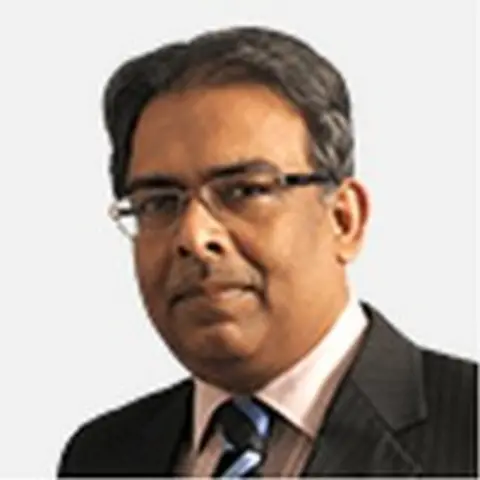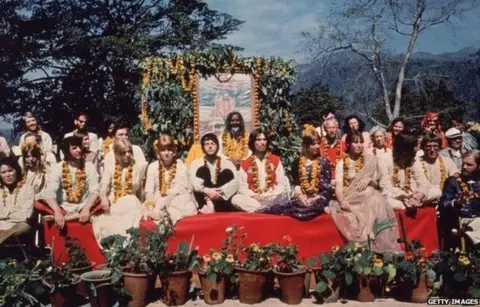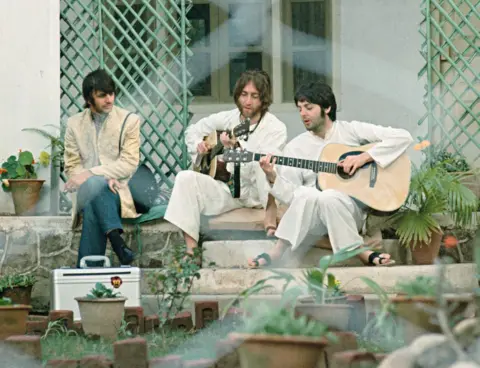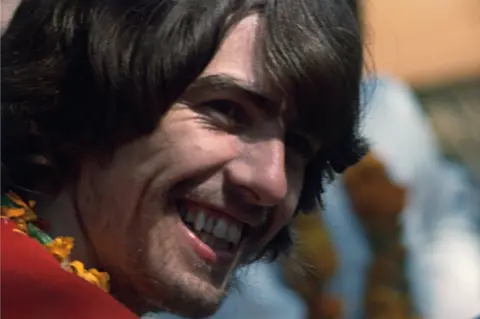When a 'heartbroken' backpacker met The Beatles in India

 Getty Images
Getty ImagesA Canadian backpacker's meeting with The Beatles in a spiritual retreat In India half a century ago is the subject of a new documentary. For filmmaker Paul Saltzman it was a "life-changing" experience.
When a 23-year-old Canadian man arrived at an ashram near India's holy city of Rishikesh in 1968 to meditate, he was told the place was out of bounds because The Beatles were living there.
Paul Saltzman had been backpacking in India when news arrived from Montreal that his girlfriend had moved on.
Heartbroken, he had travelled by train, boat and taxi to the retreat, run by Maharishi Mahesh Yogi, one of the most flamboyant of the self-styled gurus to emerge from the era of hippiedom. The plan was to meditate and "cure my broken heart," as Saltzman says.
After many hours of persuasion, the helpful ashram attendant had let Saltzman in.
He had headed straight into an hour-long meditation session, and come out feeling better. "The agony of heartbreak had gone. I stepped out into the woods to see the place," Saltzman told me in a phone interview.
There he spotted The Beatles for the first time.
John Lennon, Paul McCartney, Ringo Starr and George Harrison, wearing traditional Indian dress, were sitting at a long table near a cliff. Some of their wives and girlfriends were there, as were actress Mia Farrow, Mike Love of the Beach Boys, and folk singer Donovan. They planned a three-month-retreat at the sprawling 18-acre estate.
Saltzman asked if he could join. McCartney drew up a chair.
 Paul Saltzman
Paul Saltzman"I sat down and I heard a scream in my head: Eeeks, they are The Beatles!" says Saltzman, now 78 and an Emmy-award winning director.
Four years before, in 1964, Saltzman had joined 18,000 shrieking fans to watch them live at the Maple Leaf Gardens in Toronto. He didn't remember much more.
Now, in a stroke of serendipity, he was now standing in front of the world's most-celebrated band.
The Beatles had been basking in the success of Sgt Pepper's Lonely Hearts Club Band, their 1967 iconic album, and were beginning to write songs for the next, which would become known as the White Album.
As Saltzman tells the story, the ice was broken in no time.
"Are you an American?" Lennon asked Saltzman.
"No, I am Canadian," Saltzman said.
"Ah, he's from the one of the colonies," Lennon quipped.
A roar of laughter rose from the table.
"So are you still worshipping Her [Royal] Highness then?" Lennon joked.
Saltzman said that he didn't, "personally".
McCartney and Starr joined in.
"Well, you have the Queen on your money..."
Saltzman replied: "We have the Queen on our money but, hey, she lives with you!"
 larry kurland
larry kurland Over the next week the backpacker hung out with The Beatles in the remote retreat by the Ganges. They meditated, sang, ate vegetarian food and talked.
More than 50 years after he met the Fab Four, Saltzman has made a 79-minute documentary, Meeting The Beatles in India. Narrated by Morgan Freeman and produced by David Lynch, the film, among other things, contains rare images of the band taken by Saltzman. They are wistful vignettes of the rock stars in their prime, unguarded and relaxed.
"It was a magically pure meeting. I loved their music. But I wasn't really besotted with them as celebrities, and they behaved normally and had no starry airs or ego," says Saltzman.
He took pictures of the band on three occasions with his cheap Pentax camera. Thirty of 54 pictures he took had a Beatle in them.
Then he returned home and put the colour slides away in a cardboard box in his basement for 32 years, until his daughter goaded him to do something with them. That was when he produced a limited edition book in 2005 carrying some of the pictures.
 PAUL SALTZMAN
PAUL SALTZMANAt the ashram, Ringo Starr gave his 16mm camera to Saltzman, along with 100ft (30m) of film, so he could shoot some footage of the band and keep it for himself, telling him it "could be worth some money". The three minutes of footage which Saltzman shot and took home was lost and never found.
"I actually never thought I would do much with the pictures and footage then. I tried to get The Beatles interested in a project for 12 years, but they never responded and I gave up," Saltzman says.
At the ashram, surrounded by woods full of monkeys and birdsong, much of the White Album, the band's only double album, and one which divided the critics, was born.
Saltzman reckons the band wrote between 30 and 48 songs, many of which made their way to the new record: Back in the USSR, Happiness is a Warm Gun, Dear Prudence, Ob-La-Di, Ob-La-Da, Sexy Sadie, Helter Skelter and Revolution, among others.
Ob-La-Di, Ob-La-Da was born on the steps of one of the low slung cottages where the entourage lived.
One day, remembers Saltzman, he was passing by the cottage when he saw Lennon and McCartney sitting on the front steps and strumming the tune on their acoustic guitars.
He ran back, picked up the camera and took pictures of the two with a pensive-looking Starr sitting on the side, from outside a wicket gate.
Saltzman remembers the two were singing the first two lines of the song "over and over again, going fast and slow, having fun". "That's the riff we have," McCartney told Saltzman, "but no words yet".
 PAul SalTzman
PAul SalTzmanThe Beatles stayed in India for a number of weeks, apart from Ringo who left early. The now derelict ashram is still a place of pilgrimage for their fans.
Saltzman remembers the meeting as a "life-changing experience". In the film, he recreates the time through illustrations, photographs, actual footage at the ashram and interviews.
"Lennon was the funniest, with a wry, teasing wit. Starr appeared very calm and grounded. George was the quietest and most available for intimate conversations. And Paul was the most friendly and playful member of the band.
"I only knew them for eight days. But it was all very magical."
